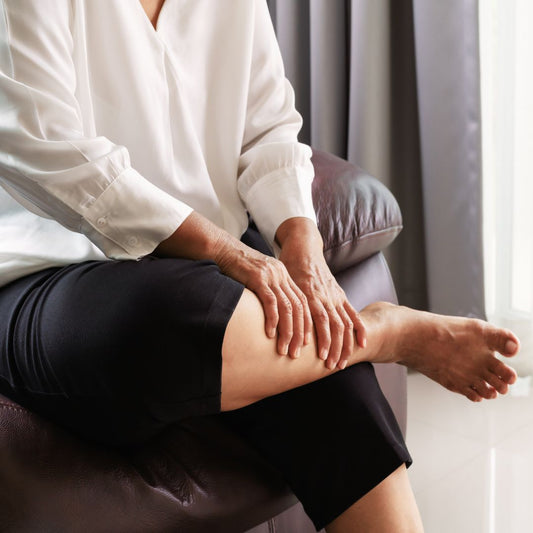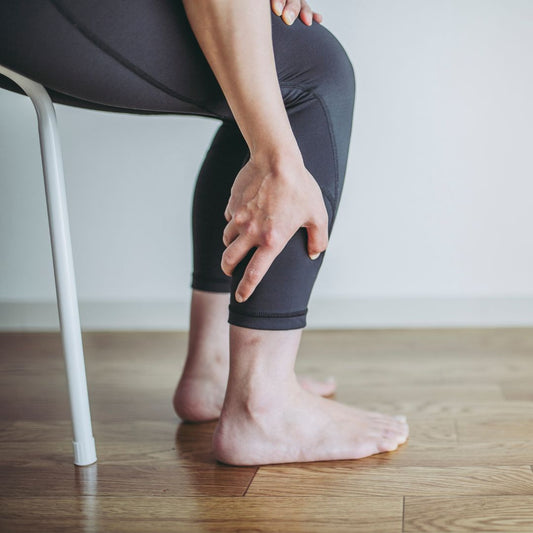As we age, it’s normal to experience the aches and pain that come with growing older, especially in your lower back. However, you may wonder at what point is the pain you’re experiencing minor or a larger problem that needs to be addressed.
Lower back pain is a common condition that affects 619 million people worldwide. It can come on as a dull, constant ache to a sudden sharp pain that makes day-to-day tasks a challenge. There are various reasons it can occur. Some may experience lower back pain when coughing or after performing a deadlift. All of that said, it comes as no surprise that with so many suffering from lower back pain, it is a major public health issue.
So, is this just a condition that comes with age or injury? First, it is important to understand the underlying causes of lower back pain and then the various ways that people find relief.
Understanding Lower Back Pain
Those that experience lower back pain, may have similar symptoms to others with the same ailment, yet a different root cause. Various factors and lower back pain causes may include:
- Poor Posture: Those who are sitting or standing with incorrect posture for prolonged periods of time can strain the lower back muscles and lead to pain over time.
- Muscle Imbalances: Weak or tight muscles, especially in the core and pelvic area, can disrupt the natural balance of the spine leading to pain. Especially if it’s from repeated heavy lifting or an awkward movement that leads to a strain.
- Lifestyle Factors: Sedentary lifestyles, lack of exercise, smoking and obesity can contribute to lower back pain.
- Ruptured Discs: When the soft inner core of a disc in the spine pushes through the outer layer, it can irritate nearby nerves and cause pain.
- Arthritis: Degenerative conditions like osteoarthritis can lead to the breakdown of the spine's joints and discs, resulting in pain in the lower back.
- Injuries: Accidents, falls, or lifting heavy objects improperly can strain or injure the lower back.
Risk Factors For Lower Back Pain
While the factors above can cause back pain, there are also risk factors that can make it more likely for a person to experience chronic lower back pain. Those factors include:
Age: Yes, it’s not in your head that you’re older and you have more aches and pains. Back pain becomes more common as you get older due to the wear and tear that is put on the spine and can start as early as 30.
Lack of Exercise: If you aren’t exercising your muscles in your back and abdomen, you they will become weak which can lead to back pain.
Obesity: If you have excess body weight, it can put more stress on your back.
Smoking: Smoking reduces blood flow, and if your spine isn’t getting enough blood flow, it can decrease your body’s ability to heal. Not to mention it also can increase your risk of osteoporosis. Coughing from smoking can also be a contributor to back pain and lead to herniated discs.
Improper Lifting: A lot of back injuries are due to poor form when lifting. If a person uses their back instead of their legs when lifting something heavy, it can strain the muscles and lead to severe back pain.
Sports: Depending on the sport, high-impact activities can lead to back injuries without the proper conditioning.
Medical Conditions: Various medical conditions such as arthritis, osteoporosis and spinal stenosis can increase risk of back pain. And in rare cases, back pain can be caused by infections or tumors in the spine.
Unsupportive Furniture: Do you have lower back pain after sleeping on your mattress? Sleeping on an unsupportive mattress or sitting on furniture that doesn't provide adequate back support can contribute to back pain.
Mental Health: Those who are prone to anxiety or depression appear to have a greater risk of back pain. When you’re stressed, you tend to tighten your muscles which can lead to increased back discomfort.
Natural Ways to Find Relief from Lower Back
Now that we have identified what causes back pain, how do you treat it? While there are medications and lower back pain relief products available, both prescription strength and over the counter drugs are not advisable to take long-term due to effects and dependence. And other medical options such as surgery may not be a fit for everyone. But don’t give up hope, there are many natural ways to treat lower back pain.
Dietary Changes – A few changes to your diet may be a game changer for your back pain. Some diets are highly inflammatory and include a lot of trans fats, refined sugars and processed foods that could be contributing to back pain. Not to mention, a healthy diet can help an individual maintain a healthy weight, strengthen your bones, and reduce pressure that is put on the spine.
Physical Activity: Engaging in regular exercise, such as walking, swimming, or yoga, can strengthen the back muscles, improve flexibility, and alleviate pain.
Physical Therapy: Physical therapy for chronic back pain may include retraining your posture, testing the limits of pain tolerance, stretching and flexibility exercises, aerobic exercises, and core strengthening.
Mindfulness and Self Care: Chronic back pain can take a toll on a person physically but also emotionally, which is why it’s important to take the time to deal with the psychological aspects of back pain. This may include meditation, massage therapy, tai chi, yoga and other cognitive and relaxation-based therapies and strategies. The goal is to retrain your brain on how you focus on pain.
Alternative Treatments: Various treatments such as acupuncture, a traditional Chinese medicine practice that involves inserting thin needles into specifics points of the body, have been known to alleviate back pain. Another option people seek for relief is visiting a chiropractor so that their spine can be adjusted.
Exercises: Lower back pain relief exercises such as core strengthening can help prevent and provide long-term relief. A strong core supports the spine and helps distribute the load evenly, and most exercises can be done anywhere. Lower back pain exercises at home that should be part of your routine include planks, bridges and abdominal crunches.
Stretching of the hamstrings and hip flexors should also be incorporated into your exercise regimen to help relieve tension on the lower back, especially after prolonged periods of sitting.
Make Environmental Changes: Ensure that your workspace and home environment are ergonomically designed to reduce strain on your back. Invest in a supportive chair, adjust your computer screen height, supportive footwear, and use lumbar cushions if necessary.
Posture - Day and Night: During the day, be mindful of your posture when you’re sitting and be sure to keep your feet flat on the ground and your knees at hip level. When standing, distribute your weight evenly on both feet and keep your shoulders back.
At night, sleep on a mattress that provides proper support for your back and use a pillow that keeps your head and neck in alignment with your spine.
Herbal Remedies: Certain herbs and spices can heal your back in a natural way. Herbs such as valerian root, known to help reduce the sensitivity of nerves, and turmeric and ginger, which have natural anti-inflammatory properties, all play a part in alleviating pain in the lower back.
Back Pain – Organic Plant Medicine: Our natural back pain relief medicine provides powerful relief from sudden sharp pain or constant aches from lower back, sciatica, neck and shoulder pain.
Regardless of the treatment plan you decide is best for you, we always advise that you talk with your doctor to see what option will benefit you long-term.
Moving Forward
We get it, lower back pain can be completely debilitating and change a person’s quality of life. However, it can be managed and prevented through various methods. If you are experiencing back pain, first, try and address the root cause to see if you can make changes immediately to your lifestyle. Then work with your doctor to find the best treatment plan moving forward.
Don’t lose hope. You can get your life back with consistency, patience, and dedication to making changes to your lifestyle and finding the path to a life free of the limitations of lower back pain.




